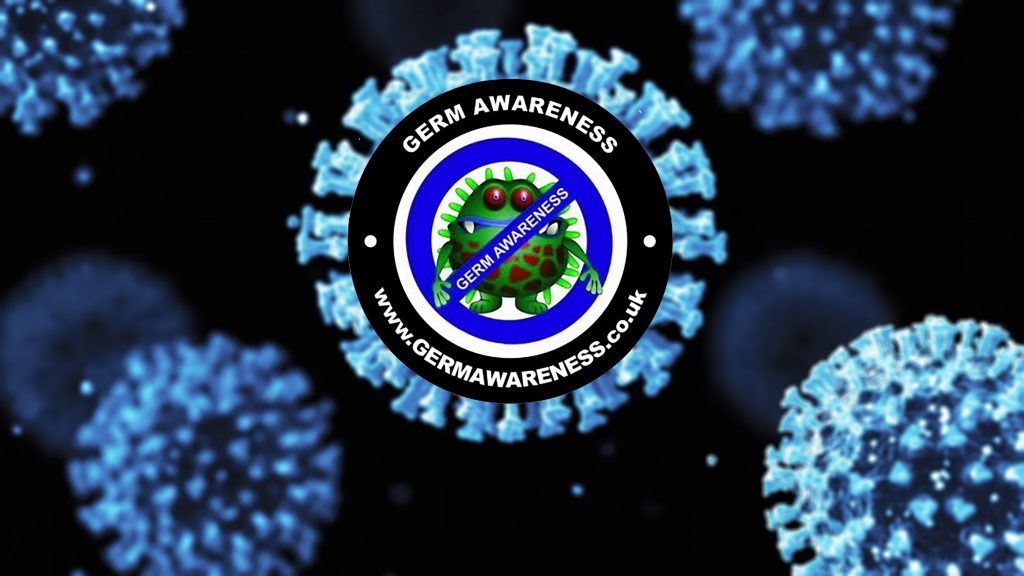
www.GermAwareness.co.uk
This domain would be ideal for any organization wanting to keep up to date about Biotechnology, and spreading germ awareness, not germs, it could also be a website selling PPE. If and when a global outbreak happens people will be searching the keywords about Germ Awareness, not only this, but the site could also be a teaching tool for children and schools.

Exploring the Spectrum: Understanding Different Types of OCD
Obsessive-Compulsive Disorder (OCD) is a complex mental health condition characterized by intrusive thoughts (obsessions) and repetitive behaviors or rituals (compulsions). While the term “OCD” is often used colloquially to describe someone who is excessively neat or organized, the reality of OCD extends far beyond cleanliness and orderliness. OCD manifests in various forms, each presenting its unique challenges and symptoms. Understanding these different types of OCD is crucial for accurate diagnosis, effective treatment, and empathy toward those affected.
- Contamination OCD: Contamination OCD involves an overwhelming fear of germs, illness, or contamination. Individuals with this subtype may compulsively wash their hands, avoid touching certain objects or surfaces, or excessively clean their surroundings to reduce anxiety. Despite repeated cleaning rituals, the fear of contamination persists, leading to distress and impairment in daily functioning.
- Checking OCD: Checking OCD entails constant doubts and fears regarding safety and security. Individuals may repeatedly check appliances, locks, or other items to ensure they are turned off or locked, even if they logically know they are secure. This can significantly disrupt daily life, as individuals may spend excessive amounts of time engaging in checking behaviors, leading to stress and exhaustion.
- Symmetry and Orderliness OCD: Symmetry and orderliness OCD involves an intense need for symmetry, exactness, or perfection. Individuals may feel compelled to arrange objects in a specific way, aligning them perfectly or organizing them according to rigid patterns. Deviations from these patterns can cause significant distress and discomfort, leading to repetitive behaviors aimed at restoring order and symmetry.
- Hoarding OCD: Hoarding OCD is characterized by an inability to discard possessions, regardless of their value or utility. Individuals with this subtype may accumulate excessive amounts of items, leading to clutter and disorganization in their living spaces. Hoarding behaviors can significantly impair functioning and may pose health and safety risks if left untreated.
- Ruminations and Intrusive Thoughts: Ruminations and intrusive thoughts OCD involve persistent, unwanted thoughts or mental images that cause distress. These thoughts may be violent, taboo, or irrational, and individuals may engage in compulsive behaviors to neutralize or alleviate the anxiety they provoke. Despite efforts to suppress or ignore these thoughts, they often persist, leading to significant emotional distress.
- Counting and Ordering OCD: Counting and ordering OCD involves an obsession with numbers, sequences, or patterns. Individuals may feel compelled to count objects, repeat certain phrases, or perform actions a specific number of times to reduce anxiety or prevent harm. These rituals can be time-consuming and disruptive, interfering with daily activities and relationships.
- Just Right OCD: Just Right OCD is characterized by a sense of incompleteness or discomfort unless certain actions or rituals are performed exactly as desired. Individuals may feel compelled to repeat tasks until they feel “just right” or experience a sense of relief. These behaviors can be highly ritualized and may involve specific routines or movements to achieve a sense of completeness.
- Harm OCD: Harm OCD involves intrusive thoughts or fears of harming oneself or others, often contrary to one’s moral or ethical beliefs. Individuals with this subtype may experience intense distress or guilt over these thoughts, despite having no intention or desire to act on them. Compulsive behaviors may include seeking reassurance, avoiding triggers, or mentally reviewing scenarios to alleviate anxiety.
It’s important to note that individuals with OCD may experience symptoms from multiple subtypes, and symptom severity can vary greatly among individuals. Additionally, OCD is often accompanied by other mental health conditions, such as anxiety or depression, further complicating diagnosis and treatment.
Effective treatment for OCD typically involves a combination of therapy, such as cognitive-behavioral therapy (CBT) and exposure and response prevention (ERP), and medication, such as selective serotonin reuptake inhibitors (SSRIs). By addressing the specific symptoms and underlying beliefs associated with each subtype, individuals with OCD can learn to manage their symptoms and regain control over their lives.
The Fluid Nature of OCD: How Symptoms Can Evolve Over Time
Obsessive-Compulsive Disorder (OCD) is a complex mental health condition characterized by intrusive thoughts (obsessions) and repetitive behaviors or rituals (compulsions). While OCD is often associated with specific subtypes, such as contamination or checking, the reality is that symptoms can evolve and change over time, sometimes manifesting in different forms or subtypes. Understanding the fluid nature of OCD is crucial for accurate diagnosis, effective treatment, and ongoing support for individuals living with the condition.
One of the hallmarks of OCD is its tendency to morph and adapt, leading to shifts in symptoms and behaviors. For example, an individual may initially experience symptoms of germ contamination OCD, characterized by an overwhelming fear of germs or illness. This may manifest in compulsive hand-washing or avoidance of perceived contaminated objects or surfaces.
However, over time, these symptoms may evolve or expand to include other subtypes of OCD, such as checking or symmetry. The individual may develop intrusive thoughts related to safety or security, leading to compulsive checking behaviors to ensure that doors are locked or appliances are turned off. Similarly, they may experience a heightened need for symmetry or exactness, leading to compulsive arranging or organizing of objects to alleviate anxiety.
The evolution of OCD symptoms can be influenced by various factors, including life experiences, stressors, and changes in the individual’s environment or circumstances. Additionally, the presence of comorbid mental health conditions, such as anxiety or depression, can further complicate the symptom picture and contribute to symptom variability over time.
Intrusive thoughts are a common feature of OCD and can play a significant role in symptom evolution. These thoughts are often unwanted, distressing, and intrusive, causing intense anxiety or discomfort. Individuals may experience intrusive thoughts related to their specific OCD subtype, such as fears of contamination or harm, as well as other themes, such as taboo or violent thoughts.
“In response to intrusive thoughts, individuals with OCD may engage in compulsive rituals or behaviors to reduce anxiety or prevent harm. These rituals can be highly time-consuming and may consume significant portions of the individual’s day. For example, someone with contamination OCD may spend hours washing their hands or cleaning their surroundings, while someone with ‘Checking OCD’ may spend excessive time repeatedly checking locks or appliances”.
The time spent on these rituals can have a profound impact on the individual’s daily life, affecting their relationships, work or school performance, and overall quality of life. Despite recognizing the irrationality of their behaviors, individuals with OCD often feel compelled to continue their rituals to alleviate anxiety or prevent perceived harm.
Effective treatment for OCD involves addressing both obsessions and compulsions through therapy, such as cognitive-behavioral therapy (CBT) and exposure and response prevention (ERP), as well as medication, such as selective serotonin reuptake inhibitors (SSRIs). By targeting the underlying beliefs and thought patterns associated with OCD, individuals can learn to manage their symptoms and reduce the frequency and intensity of their rituals.
Conclusion
OCD symptoms can evolve and change over time, sometimes manifesting in different subtypes or themes. By understanding the fluid nature of OCD and providing comprehensive treatment and support, individuals living with the condition can work towards managing their symptoms and improving their quality of life. OCD is characterized by various subtypes, each presenting its unique challenges and symptoms. By recognizing the diversity of OCD presentations, we can foster greater understanding, empathy, and support for those affected by this debilitating condition. Through comprehensive treatment and ongoing support, individuals with OCD can work towards recovery and lead fulfilling lives.
Over time, individuals living with OCD can undergo profound transformations in their perspective and ability to manage their symptoms. What seemed impossible or overwhelming, such as touching someone, a year or so ago, may become more manageable through dedicated therapy, support, and personal growth. As they work through their fears and confront their obsessions and compulsions, they may find themselves gradually desensitized to once-dreaded situations. However, it’s important to acknowledge that while they may overcome specific triggers or compulsions, OCD is a complex condition that can evolve and manifest in different ways. Thus, while they may conquer one subtype, they may find themselves facing challenges from another, demonstrating the adaptive nature of OCD and the ongoing journey of self-discovery and resilience for those affected.
Further Reading
- https://disabledentrepreneur.uk/category/obsessive-compulsive-disorder/
- https://disabledentrepreneur.uk/mental-health-support/
- https://disabledentrepreneur.uk/useful-links-2/
#ocd #ocdcymru #obsessivecompulsivedisorder #germcontamination #germawareness #mentalhealth #cbt #ert #exposureresponsetheraphy #selfhelptherapy
ADVERTISEMENTS


Andrew Jones is a seasoned journalist renowned for his expertise in current affairs, politics, economics and health reporting. With a career spanning over two decades, he has established himself as a trusted voice in the field, providing insightful analysis and thought-provoking commentary on some of the most pressing issues of our time.










